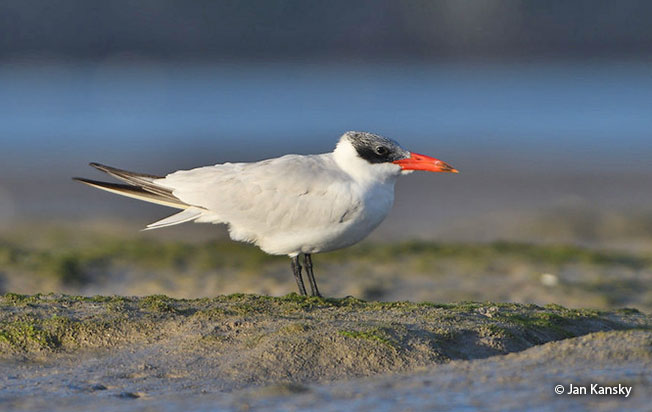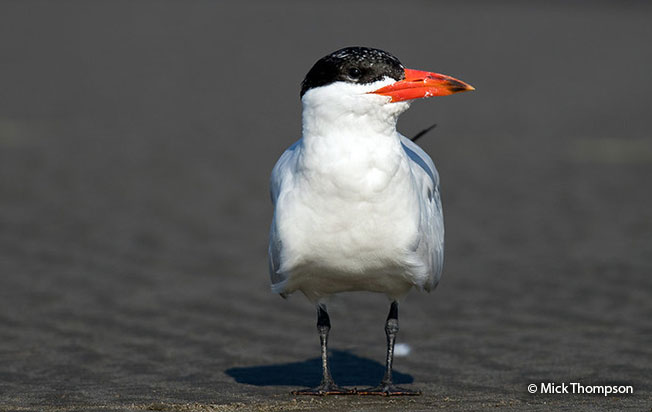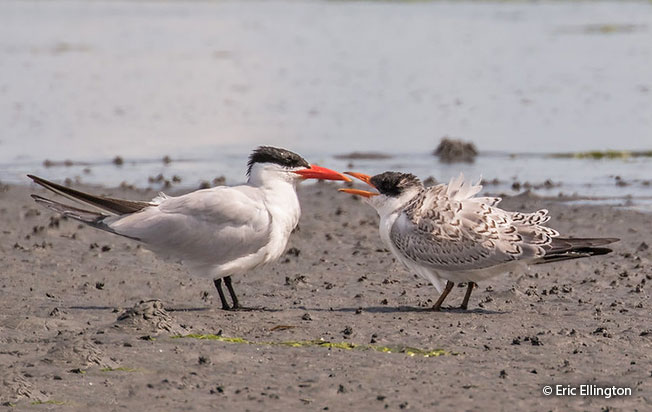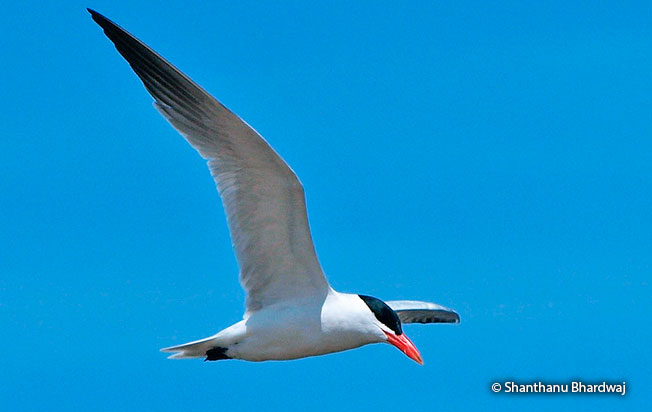Order: Charadriiformes | Family: Laridae | IUCN Status: Least Concern

Age: Adult, basic | Sex: Unknown | Loc. Florida, USA

Age: Adult, alternate | Sex: Unknown | Loc. Washington State, USA

Age: Adult, alternate | Sex: Unknown | Loc. Washington State, USA

Age: Adult, alternate | Sex: Unknown | Loc. Washington State, USA
Identification & Behavior: ~50.5 cm (20 in). The Caspian Tern is a very large, almost gull-like tern. In fact it is the largest of all terns. As with other terns, the upperparts are bluish-gray with the rest of the body white. Adults in breeding plumage have a solid black cap the extends below the eye. Birds in non-breeding plumage have a cap streaked with gray and black. The bill is thick and bright red with a variable amount of black near the tip. Other similarly large terns include Royal Tern and Elegant Tern.
Status: The Caspian Tern has been included in the main list of birds of Peru in March 2020 based on a small flock of birds recorded in Manglares de Tumbes. It also occurs in Co and Ec.
Name in Spanish: Gaviotín Piquigrueso.
Sub-species: Caspian Tern (Hydroprogne caspia). (Pallas, 1770)
Meaning of Name: Hydroprogne: Gr. hudros= water, progne=swallow. caspia: L. related to or coming from the Caspian Sea.
Distribution Map
 Voice
Voice
 Voice
VoiceReferences: